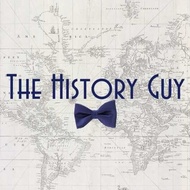
Join The History Guy from YouTube in conversation about his videos and various topics in history. Here you can find behind-the-scenes peeks of the set and The History Cats. Share ideas for future videos or ask questions of both the community and The History Guy himself. Early releases and the occasional extras are available for supporting members.
Generally historians define the US "Founding Fathers" as men who were instrumental in the founding of the United States, in the Revolutionary war and in the creation and signing of a number of important documents: the Continental Association, the Declaration of Independence, the Articles of Confederation, and finally the Constitution. But of all of the many names of leaders during the time, there is only one who actually signed all four of those important documents. Roger Sherman played a vital role in the founding of the United States.
On January 2, 1980, the era of detent ended and the "forever war " began. And nothing has been the same since.
More Essex class aircraft carriers were built than any other capital ship in the 20th century, and the class would be witness to events that would come to define the modern world, and the age of the aircraft carrier.
The Reconquista, or Christian reconquest of Iberia, took nearly 800 years. The fighting did not come without great attempts by Muslim powers across the strait trying to reestablish their presence in mainland Europe. The last gasp of that effort came in the 1330s, when the powerful Marinid sultanate of what is modern Morocco invaded in an attempt to reverse Christian gains and secure the perilous position of the Sultanate of Granada.












